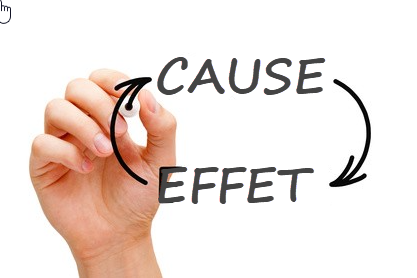Introduction to the Opioid Crisis
The opioid crisis, emerging as one of the most pressing public health challenges, has created devastating consequences on a global scale. Characterized by an alarming increase in opioid abuse, this crisis has led to a cascade of addictions, overdoses and premature deaths. Opioids, a class of powerful medications prescribed to relieve pain, have unfortunately given rise to uncontrolled misuse.
The urgency to find non-opioid alternatives for pain management is now imperative, as opioid addiction has grown into an epidemic of epidemic proportions. The human and social costs of this crisis are immense, reaching beyond statistics to affect individuals, families and entire communities.
This introduction explores key aspects of the opioid crisis, highlighting the critical need to develop pain management approaches that preserve quality of life without the risks associated with opioids. In the face of this crisis, innovation in pain medicine and management becomes a vital mission to ensure a safer and healthier future for all.
The crisis in Canada
“In Canada, approximately 7.6 million people, or one in five (lifetime), live with chronic pain, many of whom report that it negatively affects some or most daily activities. » Canadian Pain Task Force Report: March 2021
The opioid crisis affects the entire country, but it hits some areas harder than others. Since 2016, rates of deaths and hospitalizations apparently linked to opioid use have been particularly high in western provinces such as British Columbia and Alberta, as well as the Yukon and Territories. of the North-West. Nationally, the majority of deaths apparently linked to opioid use have been among men, primarily affecting those aged 30 to 39. Available data suggest the existence of regional disparities in health outcomes by age and sex, particularly when synthetic opioids are involved. However, it is important to note that variations in data collection methods and reporting requirements may influence the interpretation and comparability of results. (Evidence Synthesis – The Opioid Crisis in Canada: A National Perspective)
The growing scale of the opioid crisis in Canada stems from the use of both illicit and prescribed opioids. In 2016, the number of deaths apparently linked to opioid use was 2,861, an average of 8 deaths per day, exceeding the average daily number of Canadians who died in motor vehicle accidents in 2015. However , these numbers represent only a fraction of the problem: in 2016, there were an average of 16 hospitalizations per day in Canada linked to opioid poisoning. It is important to emphasize that this crisis is not confined to illicit or street drug users; rather, it is a national public health crisis affecting the entire population, regardless of age or socioeconomic group, and in every community across Canada.
The Importance of Non-Opiate Solutions in Pain Management
The importance of non-opiate solutions in pain management cannot be overstated, particularly in light of the ongoing opioid crisis and the associated risks of addiction, overdose, and adverse effects. Non-opiate interventions offer effective alternatives for managing pain across various clinical settings, addressing both acute and chronic pain conditions while minimizing the potential for opioid-related harm. One key advantage of non-opiate approaches is their ability to target pain through multiple mechanisms, including anti-inflammatory, analgesic, and neuromodulatory pathways, thereby providing comprehensive pain relief without the risk of opioid-related adverse effects. Non-opiate modalities encompass a diverse array of pharmacological and non-pharmacological interventions, ranging from over-the-counter analgesics and adjuvant medications to physical therapy, acupuncture, cognitive-behavioral therapy, and interventional procedures.
Non-opiate pharmacological options, such as nonsteroidal anti-inflammatory drugs (NSAIDs), acetaminophen, and adjuvant medications like anticonvulsants and antidepressants, offer effective pain relief across a broad spectrum of pain conditions, including musculoskeletal, neuropathic, and inflammatory pain. These medications target specific pain pathways and mechanisms, providing symptomatic relief while minimizing the risk of opioid-related adverse effects, such as respiratory depression, sedation, tolerance, and dependence. Moreover, non-opiate pharmacological interventions can be tailored to individual patient needs, allowing for personalized pain management strategies that optimize efficacy and safety.
Non-pharmacological approaches play a crucial role in pain management by addressing the underlying drivers of pain and enhancing the body’s natural healing processes. Physical therapy, including exercise therapy, manual therapy, and modalities such as ultrasound and transcutaneous electrical nerve stimulation (TENS), can improve mobility, strength, and function while reducing pain and disability in musculoskeletal conditions. Similarly, complementary and alternative therapies, such as acupuncture, chiropractic care, and mind-body interventions like meditation and yoga, offer holistic approaches to pain management that promote relaxation, stress reduction, and pain modulation without the use of opioids.
Interventional procedures, such as nerve blocks, joint injections, and radiofrequency ablation, provide targeted pain relief by disrupting pain signaling pathways and reducing inflammation at the site of injury or pathology. These minimally invasive techniques offer rapid onset of pain relief and may provide sustained benefits for individuals with chronic pain conditions, including neuropathic pain syndromes and degenerative joint diseases. Importantly, interventional procedures can be performed as outpatient procedures, minimizing the need for hospitalization and reducing healthcare costs associated with pain management.
In addition to their therapeutic benefits, non-opiate solutions in pain management offer significant advantages in terms of safety, tolerability, and long-term outcomes. By minimizing the use of opioids, clinicians can reduce the risk of opioid-related adverse events, including respiratory depression, sedation, constipation, and cognitive impairment, while mitigating the potential for opioid misuse, addiction, and overdose. Furthermore, non-opiate approaches empower patients to take an active role in their pain management, fostering self-management skills and promoting adherence to treatment plans that prioritize functional improvement and quality of life. Overall, the integration of non-opiate solutions into comprehensive pain management strategies is essential for optimizing patient care, reducing opioid-related harm, and addressing the complex needs of individuals living with acute and chronic pain conditions.
- Reduced Risk of Addiction: Opioids, although effective in reducing pain, pose a high risk of addiction. Non-opioid solutions offer a safer approach, minimizing the danger of devastating addiction and breaking the vicious cycle of substance abuse.
- Lesser Side Effects: The notorious side effects of opioids, such as excessive drowsiness, severe constipation, and respiratory depression, can significantly impair patients’ quality of life. Non-opioid alternatives, on the other hand, tend to have fewer unwanted side effects, thus promoting better tolerance and comfort.
- Preservation of Cognitive Function: Opioids are often associated with impaired cognitive function, which may affect mental clarity and the ability to carry out daily activities. Non-opioid solutions allow pain management without compromising cognitive function, thus promoting a more normal daily life.
- Diversity of Options: Non-opioid solutions encompass a diverse range of treatments, including physical therapy, exercise, cognitive behavioral therapies and non-opioid medications. This diversity provides patients with choices tailored to their specific needs, promoting a personalized approach to pain management.
- Promoting Public Safety: The opioid crisis has significant impacts on public safety due to the increase in accidents related to driving under the influence of opioids. By promoting the use of non-opioid solutions, road safety and general community safety can be enhanced.
In conclusion, the widespread adoption of non-opioid solutions in pain management represents an essential shift toward a safer and holistic approach. This transition not only helps mitigate the individual risks associated with opioids, but it also paves the way for a better quality of life for those suffering from chronic pain. By investing in these alternatives, society can make significant progress in combating the opioid crisis and promoting safer and more responsible medical practices.
Holistic Approaches to Pain Management: Osteopathy as an Alternative to the Opioid Crisis
Holistic approaches to pain management, with osteopathy as a prominent example, prioritize natural methods of pain control as a fundamental aspect of patient care. Osteopathy, a form of manual medicine that emphasizes the interconnectedness of the body’s structure and function, aims to address the underlying causes of pain and dysfunction through non-invasive techniques that promote self-healing and restoration of balance. Central to osteopathic philosophy is the belief in the body’s innate capacity for healing and self-regulation, highlighting the importance of supporting and enhancing the body’s natural mechanisms of pain relief and recovery. Osteopathic principles underscore the interconnectedness of the musculoskeletal, nervous, circulatory, and visceral systems, recognizing that disturbances in one area of the body can manifest as pain and dysfunction elsewhere, necessitating a holistic approach to assessment and treatment.
Osteopathic treatment modalities, such as osteopathic manipulative treatment (OMT), focus on restoring musculoskeletal alignment, improving tissue mobility, and optimizing neuromuscular function to alleviate pain and enhance overall well-being. OMT techniques, including soft tissue manipulation, joint mobilization, muscle energy techniques, and myofascial release, aim to address biomechanical imbalances, reduce musculoskeletal tension, and improve circulation and lymphatic drainage to promote tissue healing and pain relief. By addressing structural dysfunctions and biomechanical imbalances, osteopathic treatment helps to alleviate mechanical sources of pain and dysfunction, providing patients with a natural and drug-free alternative to traditional pain management approaches.
Moreover, osteopathy emphasizes patient-centered care and shared decision-making, empowering individuals to actively participate in their pain management journey and explore integrative approaches to health and wellness. Osteopathic physicians take a comprehensive approach to pain assessment, considering not only the physical manifestations of pain but also the psychosocial, emotional, and environmental factors that may contribute to pain perception and chronicity. By addressing the underlying root causes of pain and dysfunction, rather than merely masking symptoms with medication, osteopathy offers patients a more sustainable and holistic approach to pain management that promotes long-term recovery and improved quality of life.
In the context of the opioid crisis, holistic approaches to pain management, such as osteopathy, play a crucial role in reducing reliance on opioid medications and mitigating the risks of opioid-related harm, including addiction, overdose, and adverse effects. By promoting natural methods of pain control and addressing the underlying drivers of pain and dysfunction, osteopathy offers patients a safer, more effective, and more sustainable alternative to opioids for managing acute and chronic pain conditions. Additionally, by fostering collaboration and interdisciplinary care, osteopathic physicians can work alongside other healthcare providers to develop comprehensive pain management strategies that address the complex needs of patients while minimizing the use of opioid medications. Overall, osteopathy serves as a valuable tool in combating the opioid crisis and promoting safer, more compassionate, and more effective approaches to pain management that prioritize the health and well-being of patients.
- Comprehensive Approach: Osteopathy stands out for its holistic approach which considers the body as an interconnected whole. Rather than simply targeting symptoms, it addresses the underlying causes of pain, addressing physical, emotional and structural aspects simultaneously.
- Manual and Non-Invasive Treatment: At the heart of osteopathy is the use of non-invasive manual techniques. Practitioners use gentle manipulations to restore musculoskeletal balance, promote circulation and relieve tension, providing an alternative to invasive approaches, often associated with opioids.
- Consideration of Emotional Balance: Unlike opioid medications which can mask pain without addressing its emotional origins, osteopathy integrates the emotional dimension into the treatment process. It seeks to identify and treat the emotional factors that contribute to pain.
- Stimulation of Natural Healing Mechanisms: Rather than simply providing temporary relief, osteopathy aims to stimulate the body’s natural healing mechanisms. It encourages mobility, improves blood circulation and promotes cell regeneration, contributing to long-term recovery.
- Personalization of Treatment: Each individual is unique, and osteopathy recognizes this uniqueness by personalizing treatment according to the specific needs of each patient. This aligns with the search for more personalized and tailored pain management approaches.
- Promotion of Continuous Well-Being: Osteopathy goes beyond immediate pain management with an emphasis on prevention and maintenance of ongoing well-being. She encourages patients to adopt healthy lifestyle habits and to actively participate in their own health.
In conclusion, osteopathy is emerging as a valuable alternative in pain management, offering a holistic approach that meets the needs of the patient as a whole. This method makes a significant contribution to the quest for alternatives to opioids, highlighting the idea that comprehensive consideration of the patient is essential for sustainable and balanced pain management.
In 2016 in the United States the CDC (Centers for Disease Control and Prevention) issued guidelines
Like us, the United States is also currently facing an opioid epidemic with an increase in opioid use over the past two decades. In 2016, prescription opioid abuse was found to affect at least 4% of the adult population in the United States.[9] More than 33,000 people died from opioid overdoses in 2015, whether prescribed or illicitly used.[10] Besides the risk of overdose and addiction, there is limited evidence supporting the effectiveness of long-term opioid therapy in the treatment of chronic pain. Therefore, in 2016, the Centers for Disease Control and Prevention (CDC) published guidelines for prescribing opioids in chronic pain conditions not related to cancer or palliative care. These guidelines promote the use of non-opioid treatments for chronic pain management.[11] This article aims to review alternative non-opioid treatment options.
List of alternative non-opioid treatment options:
- Non-Steroidal Anti-Inflammatory Drugs (NSAIDs):
- Effectiveness: NSAIDs, such as ibuprofen and naproxen, are effective in reducing inflammation and relieving inflammatory pain.
- Benefits: Available over the counter, they are widely used for common conditions such as joint pain.
- Limitations: May cause gastrointestinal upset and increase the risk of bleeding. Some patients experience sensitivity, limiting their long-term use.
- Acetaminophen:
- Effectiveness: Primarily an analgesic, paracetamol (acetaminophen) is effective in treating mild to moderate pain.
- Benefits: Less likely to cause gastrointestinal upset. Suitable for those who cannot tolerate NSAIDs.
- Limitations: In high doses or in overdose, paracetamol can cause serious liver damage.
- COX-2 inhibitors:
- Efficacy: Celecoxib and other COX-2 inhibitors specifically target cyclooxygenase-2 inhibition, reducing inflammation.
- Advantages: Less gastrointestinal risks compared to non-selective NSAIDs.
- Limitations: Associated with cardiovascular concerns, requiring individual risk assessment.
- Antidepressants and Anticonvulsants:
- Effectiveness: Some antidepressants, such as duloxetine, and anticonvulsants, such as gabapentin, are effective in managing neuropathic pain.
- Benefits: Act on neuropathic pain pathways and may improve mood.
- Limitations: Possible side effects, requiring individual adaptation of treatment.
- Local Anesthetics:
- Effectiveness: Used to relieve local pain, local anesthetics, such as lidocaine, can be injected or applied topically.
- Benefits: Provide rapid, targeted relief.
- Limitations: Limited to temporary relief, requiring repeated administrations.
- Physical Therapy and Exercise:
- Effectiveness: Exercise and physical therapy can reduce chronic pain and improve function.
- Benefits: Promotes long-term healing, strengthens muscles and improves mobility.
- Limitations: Require commitment and time to see lasting results.
- Nerve Stimulation by Transcutaneous Electrical Current (TENS):
- Effectiveness: Uses low voltage electrical currents to relieve pain. May be effective for some people, especially for neuropathic pain.
- Advantages: Non-invasive, can be used at home.
- Corticosteroids:
- Efficacy: Reduces local inflammation, often used for inflammatory conditions or to relieve acute pain.
- Benefits: May provide rapid, localized relief.
- Limitations: Potential side effects with long-term use.
- Antidepressants:
- Effectiveness: Some antidepressants, such as duloxetine, may be effective in managing neuropathic pain.
- Benefits: Positive effects on mood and pain management.
- Limitations: Requires individual adaptation based on patient reactions.
- Joint Injections:
- Effectiveness: Used to reduce inflammation and relieve joint pain.
- Advantages: Relatively quick procedure, may provide long-term relief.
- Limitations: Requires precise administration.
- Peripheral Nerve Blockages:
- Effectiveness: Temporarily blocks nerve signals from a specific region.
- Advantages: Localized procedure for rapid relief.
- Limitations: Temporary effects, may require repetition.
- Injections de Points Trigger :
- Effectiveness: Used to treat pain associated with trigger points in muscles.
- Benefits: Targeted to specific areas of muscle tension.
- Limitations: May require repeated injections.
- Epidural Steroid Injections:
- Effectiveness: Reduces inflammation in the epidural region, often used for radicular pain.
- Benefits: May provide prolonged relief.
- Limitations: Potential risks associated with the procedure.
- Radiofrequency Ablations:
- Effectiveness: Denervation of nerves to reduce pain transmission.
- Benefits: May provide prolonged relief.
- Limitations: Requires repeated procedures.
- Sympathetic Nerve Blockages:
- Efficacy: Used to treat pain related to sympathetic dysregulation.
- Benefits: Target specific areas of the sympathetic nervous system.
- Limitations: Requires thorough evaluation.
- Spinal Cord Stimulation:
- Effectiveness: Uses electrical stimulation to modulate pain signals to the spinal cord.
- Benefits: Option for chronic pain management.
- Limitations: Invasive procedure, requires careful evaluation.
- Dorsal Root Ganglion Stimulation a
Integration of Osteopathy into Pain Management Protocols
Integrating osteopathy into pain management protocols provides a holistic, non-opioid approach that can be synergistic with other treatment modalities. Here is how osteopathy can be integrated in a beneficial way:
- Overall Assessment: Osteopaths carry out a complete assessment of the patient, taking into account their musculoskeletal structure, their mobility, and how these aspects may influence their pain. This comprehensive assessment allows for a thorough understanding of the factors contributing to pain.
- Manual Treatment: Osteopathy is characterized by manual treatment techniques. Osteopaths use gentle manipulations, stretching, and release techniques to improve joint mobility, reduce muscle tension, and promote blood circulation. These interventions can help relieve pain by directly addressing the sources of tension and restriction.
- Improved Circulation: By promoting blood and lymphatic circulation, osteopathy can help reduce inflammation and speed up the healing process. Improved circulation can also help remove toxins accumulated in the tissues, promoting faster recovery.
- Structure-Function Correlations: Osteopaths work on the principle of the correlation between the structure and function of the body. By optimizing alignment and mobility, osteopathy aims to improve overall physiological function, which can help reduce chronic pain.
- Individualized Approach: Each osteopathy session is adapted to the specific needs of the patient. By taking into account medical history, pain level, and treatment goals, the osteopath can personalize interventions to maximize benefits for each individual.
- Interdisciplinary Collaboration: Osteopathy is often integrated into broader pain management protocols. Osteopaths may collaborate with other healthcare professionals, such as physiotherapists, doctors and pain specialists, to ensure a comprehensive and coordinated approach.
- Patient Education: Osteopaths often educate patients on self-care techniques, specific exercises and lifestyle modifications that can complement osteopathic sessions. This allows patients to take an active part in managing their pain.
The integration of osteopathy into pain management protocols aligns with the search for non-opioid solutions, with an emphasis on promoting musculoskeletal health and relieving pain through natural and non-invasive.
Challenges and Solutions in Adoption of Non-Opiate Solutions
Potential challenges in adopting non-opioid solutions:
List of potential challenges:
- Cultural and professional resistance:
- Challenge: Traditional medical culture and training of health professionals may focus on the use of opioids for pain management.
- Solution: Promote increased awareness and education among healthcare professionals about non-opioid alternatives. Encourage cultural changes within healthcare settings to integrate these alternatives into treatment protocols.
- Perception of effectiveness:
- Challenge: Some patients and healthcare professionals may perceive opioids as more effective in relieving pain.
- Solution: Provide solid evidence of the effectiveness of non-opioid solutions through clinical studies, successful patient testimonials, and recommendations from medical organizations.
- Accessibility and Cost:
- Challenge: Non-opioid solutions, such as physiotherapy or chiropractic, can sometimes be less accessible or more expensive.
- Solution: Work on health insurance policies favorable to non-opioid therapies. Encourage reimbursement and coverage for these approaches to make them more accessible to more patients.
- Complexity of Multidisciplinary Treatments:
- Challenge: Integrating multiple non-opioid approaches can be complex and require close coordination between different healthcare professionals.
- Solution: Promote interdisciplinary collaboration between doctors, physiotherapists, osteopaths, psychologists, and other health professionals. Promote multidisciplinary care teams for integrated pain management.
- Risks of Side Effects:
- Challenge: Some non-opioid alternatives may also have side effects or risks, although less severe.
- Solution: Establish open and transparent communication between healthcare professionals and patients about potential risks. Personalize approaches based on patient medical history and preferences.
- Public Education:
- Challenge: The general public may lack knowledge about non-opioid alternatives.
- Solution: Implement educational campaigns to inform the public about available non-opioid options, their benefits, and their role in pain management.
- Time Pressure in Healthcare:
By overcoming these challenges, it is possible to promote wider adoption of non-opioid solutions, providing safer and more sustainable options for pain management.
The Importance of Educating Healthcare Professionals on Non-Opioid Solutions, with an Emphasis on Osteopathy
The importance of educating healthcare professionals on non-opioid solutions, with an emphasis on osteopathy, cannot be overstated in the context of the ongoing opioid crisis and the urgent need to address the overreliance on opioid medications for pain management. Osteopathy, as a holistic and integrative approach to healthcare, offers unique insights and therapeutic modalities that prioritize natural methods of pain control and address the underlying causes of pain and dysfunction. By educating healthcare professionals on the principles and practices of osteopathy, we can empower them to provide more comprehensive, patient-centered care that promotes healing, reduces reliance on opioids, and mitigates the risks of opioid-related harm.
One key aspect of educating healthcare professionals on non-opioid solutions, particularly osteopathy, is raising awareness of the underlying principles and philosophy of osteopathic medicine. Osteopathy emphasizes the interconnectedness of the body’s structure and function, recognizing that disturbances in one area of the body can manifest as pain and dysfunction elsewhere. By understanding these principles, healthcare professionals can adopt a more holistic approach to pain management that considers not only the physical manifestations of pain but also the psychosocial, emotional, and environmental factors that may contribute to pain perception and chronicity.
Furthermore, educating healthcare professionals on the therapeutic modalities of osteopathy, such as osteopathic manipulative treatment (OMT), equips them with valuable tools and techniques for addressing musculoskeletal pain and dysfunction without the use of opioids. OMT encompasses a variety of hands-on techniques, including soft tissue manipulation, joint mobilization, muscle energy techniques, and myofascial release, that aim to restore musculoskeletal alignment, improve tissue mobility, and optimize neuromuscular function. By incorporating OMT into their practice, healthcare professionals can provide patients with effective and drug-free alternatives for managing acute and chronic pain conditions, reducing the need for opioid medications and minimizing the risks of opioid-related harm.
Additionally, educating healthcare professionals on the evidence base supporting osteopathy and non-opioid approaches to pain management is essential for fostering acceptance and integration of these modalities into mainstream healthcare practice. Numerous studies have demonstrated the efficacy of osteopathy and non-opioid interventions for pain relief across various clinical settings, including musculoskeletal, neuropathic, and inflammatory pain conditions. By familiarizing healthcare professionals with this evidence, we can build confidence in the effectiveness of non-opioid solutions and encourage their adoption as first-line treatments for pain management.
Moreover, interdisciplinary collaboration and communication are essential components of educating healthcare professionals on non-opioid solutions, with an emphasis on osteopathy. By fostering collaboration between osteopathic physicians, allopathic physicians, nurses, physical therapists, and other members of the healthcare team, we can create a supportive environment for sharing knowledge, exchanging best practices, and developing comprehensive pain management strategies that address the complex needs of patients while minimizing the use of opioid medications. Overall, educating healthcare professionals on non-opioid solutions, with a focus on osteopathy, is critical for advancing patient-centered care, reducing opioid-related harm, and promoting safer, more effective approaches to pain management in clinical practice.
- Paradigm Change:
- Importance: Educating healthcare professionals about non-opioid solutions is crucial to bringing about a paradigm shift in pain management. There is a need to move beyond opioid addiction and adopt more holistic approaches.
- Role of Osteopathy: Osteopathy offers a holistic perspective that aligns with this transformation. Professionals need to understand how osteopathy can play a key role in an integrated and comprehensive approach to pain management.
- Risk Reduction:
- Importance: Educating healthcare professionals about non-opioid solutions helps reduce the risks associated with excessive use of opioids. This helps minimize side effects, addictions, and complications related to opioids.
- Role of Osteopathy: Osteopathy, as a non-invasive method, offers an alternative with lower risks compared to opioids. Professionals need to be informed on how to integrate osteopathy into their practices to maximize benefits.
- Improved Long-Term Results:
- Importance: A thorough understanding of non-opioid solutions allows healthcare professionals to aim for long-term results rather than temporary solutions. This can lead to a significant improvement in patients’ quality of life.
- Role of Osteopathy: By integrating osteopathy into treatment plans, professionals can contribute to lasting improvements by addressing the underlying causes of pain rather than simply masking symptoms.
- Personalized Approaches:
- Importance: Education about non-opioid solutions allows professionals to personalize treatment approaches based on the specific needs of each patient. This promotes individualized and comprehensive care.
- Role of Osteopathy: Osteopathy, by focusing on the overall assessment of the patient, offers a personalized approach. Trained professionals understand how to adapt osteopathic techniques based on the unique characteristics of each individual.
- Promotion of Interdisciplinary Collaboration:
- Importance: Healthcare professional education promotes interdisciplinary collaboration, where different specialties work together to optimize patient outcomes.
- Role of Osteopathy: Osteopathy naturally fits into a multidisciplinary approach. Professionals must learn to collaborate with other practitioners to create comprehensive treatment plans.
- Response to Public Concerns:
- Importance: Education helps address growing public concerns about the risks of opioids, thereby increasing confidence in non-opioid alternatives.
- Role of Osteopathy: By providing clear information about osteopathy, professionals can reassure the public of its effectiveness and safety, thereby contributing to wider acceptance.
In sum, educating healthcare professionals about non-opioid solutions, particularly highlighting the role of osteopathy, is essential for a successful transition to safer, more effective and more focused pain management approaches. on the patient.
Conclusion
In conclusion, the opioid crisis highlights the urgency of finding non-opioid alternative solutions for pain management, in the face of a global epidemic with devastating consequences. The opioid crisis, by highlighting the dangers associated with uncontrolled use of opioids, requires a fundamental transformation in approaches to pain medicine and management.
The scale of Canada’s opioid crisis is vividly illustrated, with alarming numbers of deaths and hospitalizations linked to opioid use. The need for non-opioid solutions is all the more crucial as the crisis affects the entire population, transcending age categories and socioeconomic groups.
The importance of non-opioid solutions in pain management is supported by several arguments, including reduced risks of addiction, fewer side effects, preservation of cognitive function, diversity of options available, and promotion public safety. These alternatives offer a more personalized approach, promoting a better quality of life for individuals suffering from chronic pain.
The introduction highlights osteopathy as a promising alternative, taking a holistic approach that goes beyond simple symptom management. Osteopathy is distinguished by its manual treatment, its consideration of emotional balance, the stimulation of natural healing mechanisms, and a personalization of treatment according to the specific needs of each patient. It emerges as a significant contribution to the quest for alternatives to opioids, highlighting the importance of comprehensive patient consideration for sustainable and balanced pain management.
The text also examines alternative non-opioid treatment options recommended by the Centers for Disease Control and Prevention (CDC) in the United States. It highlights the diversity of approaches, from pharmacotherapy to physical therapy, emphasizing the need for a multidisciplinary approach in pain management.
However, potential challenges in the adoption of non-opioid solutions are identified, including cultural and professional resistance, perception of effectiveness, accessibility and cost, complexity of multidisciplinary treatments, risks of side effects , and the need for public education. Proposed solutions include promoting increased awareness, strong evidence of effectiveness, supportive health insurance policies, interdisciplinary collaboration, transparent risk communication, and educational campaigns.
Finally, the importance of educating healthcare professionals on non-opioid solutions, with an emphasis on osteopathy, is highlighted. This education is crucial for a paradigm shift in pain management, reducing the risks associated with opioids, aiming for long-term results, and promoting individualized approaches and interdisciplinary collaboration. It also addresses public concerns, building confidence in non-opioid alternatives. In sum, education plays a central role in the transition to safer, more effective, and patient-centered pain management approaches.
References
- Raja SN, Carr DB, Cohen M, Finnerup NB, Flor H, Gibson S, Keefe FJ, Mogil JS, Ringkamp M, Sluka KA, Song XJ, Stevens B, Sullivan MD, Tutelman PR, Ushida T, Vader K. The revised International Association for the Study of Pain definition of pain: concepts, challenges, and compromises. Pain. 2020 Sep 01;161(9):1976-1982. [PMC free article] [PubMed]2.
- Geneen LJ, Moore RA, Clarke C, Martin D, Colvin LA, Smith BH. Physical activity and exercise for chronic pain in adults: an overview of Cochrane Reviews. Cochrane Database Syst Rev. 2017 Jan 14;1(1):CD011279. [PMC free article] [PubMed]3.
- Kent ML, Tighe PJ, Belfer I, Brennan TJ, Bruehl S, Brummett CM, Buckenmaier CC, Buvanendran A, Cohen RI, Desjardins P, Edwards D, Fillingim R, Gewandter J, Gordon DB, Hurley RW, Kehlet H, Loeser JD, Mackey S, McLean SA, Polomano R, Rahman S, Raja S, Rowbotham M, Suresh S, Schachtel B, Schreiber K, Schumacher M, Stacey B, Stanos S, Todd K, Turk DC, Weisman SJ, Wu C, Carr DB, Dworkin RH, Terman G. The ACTTION-APS-AAPM Pain Taxonomy (AAAPT) Multidimensional Approach to Classifying Acute Pain Conditions. Pain Med. 2017 May 01;18(5):947-958. [PMC free article] [PubMed]4.
- Tighe P, Buckenmaier CC, Boezaart AP, Carr DB, Clark LL, Herring AA, Kent M, Mackey S, Mariano ER, Polomano RC, Reisfield GM. Acute Pain Medicine in the United States: A Status Report. Pain Med. 2015 Sep;16(9):1806-26. [PMC free article] [PubMed]5.
- Gaskin DJ, Richard P. The economic costs of pain in the United States. J Pain. 2012 Aug;13(8):715-24. [PubMed]6.
- Mills SEE, Nicolson KP, Smith BH. Chronic pain: a review of its epidemiology and associated factors in population-based studies. Br J Anaesth. 2019 Aug;123(2):e273-e283. [PMC free article] [PubMed]7.
- Dale R, Stacey B. Multimodal Treatment of Chronic Pain. Med Clin North Am. 2016 Jan;100(1):55-64. [PubMed]8.
- Cheatle MD. Biopsychosocial Approach to Assessing and Managing Patients with Chronic Pain. Med Clin North Am. 2016 Jan;100(1):43-53. [PubMed]9.
- Saha TD, Kerridge BT, Goldstein RB, Chou SP, Zhang H, Jung J, Pickering RP, Ruan WJ, Smith SM, Huang B, Hasin DS, Grant BF. Nonmedical Prescription Opioid Use and DSM-5 Nonmedical Prescription Opioid Use Disorder in the United States. J Clin Psychiatry. 2016 Jun;77(6):772-80. [PMC free article] [PubMed]10.
- Skolnick P. The Opioid Epidemic: Crisis and Solutions. Annu Rev Pharmacol Toxicol. 2018 Jan 06;58:143-159. [PubMed]11.
- Dowell D, Haegerich TM, Chou R. CDC Guideline for Prescribing Opioids for Chronic Pain–United States, 2016. JAMA. 2016 Apr 19;315(15):1624-45. [PMC free article] [PubMed]12.
- van Middelkoop M, Rubinstein SM, Verhagen AP, Ostelo RW, Koes BW, van Tulder MW. Exercise therapy for chronic nonspecific low-back pain. Best Pract Res Clin Rheumatol. 2010 Apr;24(2):193-204. [PubMed]13.
- Smart KM, Wand BM, O’Connell NE. Physiotherapy for pain and disability in adults with complex regional pain syndrome (CRPS) types I and II. Cochrane Database Syst Rev. 2016 Feb 24;2(2):CD010853. [PMC free article] [PubMed]14.
- Herrador Colmenero L, Perez Marmol JM, Martí-García C, Querol Zaldivar MLÁ, Tapia Haro RM, Castro Sánchez AM, Aguilar-Ferrándiz ME. Effectiveness of mirror therapy, motor imagery, and virtual feedback on phantom limb pain following amputation: A systematic review. Prosthet Orthot Int. 2018 Jun;42(3):288-298. [ PubMed ]15.
- Gibson W, Wand BM, O’Connell NE. Transcutaneous electrical nerve stimulation (TENS) for neuropathic pain in adults. Cochrane Database Syst Rev. 2017 Sep 14;9(9):CD011976. [PMC free article] [PubMed]16.
- Hylands-White N, Duarte RV, Raphael JH. An overview of treatment approaches for chronic pain management. Rheumatol Int. 2017 Jan;37(1):29-42. [PubMed]17.
- Moisset X, Bouhassira D, Avez Couturier J, Alchaar H, Conradi S, Delmotte MH, Lanteri-Minet M, Lefaucheur JP, Mick G, Piano V, Pickering G, Piquet E, Regis C, Salvat E, Attal N. Pharmacological and non-pharmacological treatments for neuropathic pain: Systematic review and French recommendations. Rev Neurol (Paris). 2020 May;176(5):325-352. [PubMed]18.
- Johnson MI, Claydon LS, Herbison GP, Jones G, Paley CA. Transcutaneous electrical nerve stimulation (TENS) for fibromyalgia in adults. Cochrane Database Syst Rev. 2017 Oct 09;10(10):CD012172. [PMC free article] [PubMed]19.
- Hurlow A, Bennett MI, Robb KA, Johnson MI, Simpson KH, Oxberry SG. Transcutaneous electric nerve stimulation (TENS) for cancer pain in adults. Cochrane Database Syst Rev. 2012 Mar 14;2012(3):CD006276. [PMC free article] [PubMed]20.
- Martimbianco ALC, Porfírio GJ, Pacheco RL, Torloni MR, Riera R. Transcutaneous electrical nerve stimulation (TENS) for chronic neck pain. Cochrane Database Syst Rev. 2019 Dec 12;12(12):CD011927. [PMC free article] [PubMed]21.
- Enthoven WT, Roelofs PD, Deyo RA, van Tulder MW, Koes BW. Non-steroidal anti-inflammatory drugs for chronic low back pain. Cochrane Database Syst Rev. 2016 Feb 10;2(2):CD012087. [PMC free article] [PubMed]22.
- Solomon SD, McMurray JJ, Pfeffer MA, Wittes J, Fowler R, Finn P, Anderson WF, Zauber A, Hawk E, Bertagnolli M., Adenoma Prevention with Celecoxib (APC) Study Investigators. Cardiovascular risk associated with celecoxib in a clinical trial for colorectal adenoma prevention. N Engl J Med. 2005 Mar 17;352(11):1071-80. [PubMed]23.
- Nussmeier NA, Whelton AA, Brown MT, Langford RM, Hoeft A, Parlow JL, Boyce SW, Verburg KM. Complications of the COX-2 inhibitors parecoxib and valdecoxib after cardiac surgery. N Engl J Med. 2005 Mar 17;352(11):1081-91. [PubMed]24.
- Mukherjee D, Nissen SE, Topol EJ. Risk of cardiovascular events associated with selective COX-2 inhibitors. JAMA. 2001 Aug 22-29;286(8):954-9. [PubMed]25.
- Coxib and traditional NSAID Trialists’ (CNT) Collaboration. Bhala N, Emberson J, Merhi A, Abramson S, Arber N, Baron JA, Bombardier C, Cannon C, Farkouh ME, FitzGerald GA, Goss P, Halls H, Hawk E, Hawkey C, Hennekens C, Hochberg M, Holland LE, Kearney PM, Laine L, Lanas A, Lance P, Laupacis A, Oates J, Patrono C, Schnitzer TJ, Solomon S, Tugwell P, Wilson K, Wittes J, Baigent C. Vascular and upper gastrointestinal effects of non-steroidal anti-inflammatory drugs: meta-analyses of individual participant data from randomised trials. Lancet. 2013 Aug 31;382(9894):769-79. [PMC free article] [PubMed]26.
- Derry S, Conaghan P, Da Silva JA, Wiffen PJ, Moore RA. Topical NSAIDs for chronic musculoskeletal pain in adults. Cochrane Database Syst Rev. 2016 Apr 22;4(4):CD007400. [PMC free article] [PubMed]27.
- Krebs EE, Gravely A, Nugent S, Jensen AC, DeRonne B, Goldsmith ES, Kroenke K, Bair MJ, Noorbaloochi S. Effect of Opioid vs Nonopioid Medications on Pain-Related Function in Patients With Chronic Back Pain or Hip or Knee Osteoarthritis Pain: The SPACE Randomized Clinical Trial. JAMA. 2018 Mar 06;319(9):872-882. [PMC free article] [PubMed]28.
- Smith HS. Potential analgesic mechanisms of acetaminophen. Pain Physician. 2009 Jan-Feb;12(1):269-80. [PubMed]29.
- Ennis ZN, Dideriksen D, Vaegter HB, Handberg G, Pottegård A. Acetaminophen for Chronic Pain: A Systematic Review on Efficacy. Basic Clin Pharmacol Toxicol. 2016 Mar;118(3):184-9. [PubMed]30.
- Chou R, Deyo R, Friedly J, Skelly A, Weimer M, Fu R, Dana T, Kraegel P, Griffin J, Grusing S. Systemic Pharmacologic Therapies for Low Back Pain: A Systematic Review for an American College of Physicians Clinical Practice Guideline. Ann Intern Med. 2017 Apr 04;166(7):480-492. [PubMed]31.
- Knezevic NN, Jovanovic F, Voronov D, Candido KD. Do Corticosteroids Still Have a Place in the Treatment of Chronic Pain? Front Pharmacol. 2018;9:1229. [PMC free article] [PubMed]32.
- Eskin B, Shih RD, Fiesseler FW, Walsh BW, Allegra JR, Silverman ME, Cochrane DG, Stuhlmiller DF, Hung OL, Troncoso A, Calello DP. Prednisone for emergency department low back pain: a randomized controlled trial. J Emerg Med. 2014 Jul;47(1):65-70. [PubMed]33.
- Obata H. Analgesic Mechanisms of Antidepressants for Neuropathic Pain. Int J Mol Sci. 2017 Nov 21;18(11) [PMC free article] [PubMed]34.
- Chincholkar M. Analgesic mechanisms of gabapentinoids and effects in experimental pain models: a narrative review. Br J Anaesth. 2018 Jun;120(6):1315-1334. [PubMed]35.
- Wiffen PJ, Derry S, Bell RF, Rice AS, Tölle TR, Phillips T, Moore RA. Gabapentin for chronic neuropathic pain in adults. Cochrane Database Syst Rev. 2017 Jun 09;6(6):CD007938. [PMC free article] [PubMed]36.
- Yaftali NA, Weber K. Corticosteroids and Hyaluronic Acid Injections. Clin Sports Med. 2019 Jan;38(1):1-15. [PubMed]





















